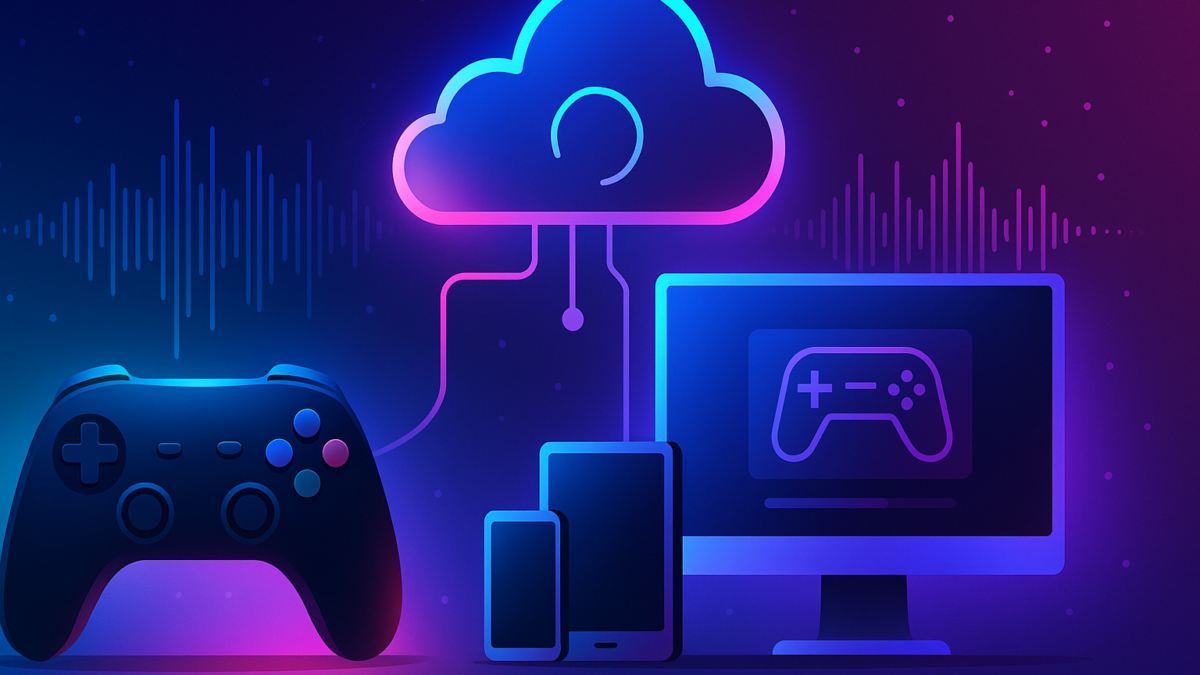Table of Contents
Introduction
In 2025, cloud gaming is no longer a fringe concept—it’s a fast-growing pillar of the gaming industry. What once sounded like a futuristic fantasy is now a functional, accessible, and increasingly powerful way to play games without the need for expensive hardware.
But does this signal the end of traditional gaming consoles like PlayStation, Xbox, and Nintendo Switch? Or are we headed toward a hybrid gaming future where cloud and hardware coexist?
Let’s explore how cloud gaming has evolved, its current capabilities, and what it means for gamers, developers, and console manufacturers.
What Is Cloud Gaming?
Cloud gaming allows users to stream games directly to their devices via the internet, similar to how we stream videos on Netflix or YouTube. The games are processed on powerful remote servers (data centers), and only the input/output data travels to and from the user’s device.
This means:
- No need to download or install games
- No high-end GPU or console required
- Instant access across multiple devices (smartphones, TVs, browsers)
Platforms like Xbox Cloud Gaming, NVIDIA GeForce NOW, Amazon Luna, and PlayStation Plus Cloud Streaming are leading the charge.
Cloud Gaming in 2025: What’s Changed?
Cloud gaming in 2025 is significantly better than just a few years ago thanks to:
- 5G and Wi-Fi 6 adoption: Reduced latency and higher bandwidth
- Edge computing: Data centers are closer to users, lowering input lag
- Better compression algorithms: Smoother visuals and minimal buffering
- Cross-platform syncing: Seamless gaming from phone to PC to TV
- Expanded libraries: AAA titles and indie games are available day one
In short, cloud gaming now feels more like console gaming—and for some, even better.
Advantages of Cloud Gaming
Here’s why cloud gaming is becoming the go-to option for many:
- Affordability: No need for $500+ consoles or $2,000 gaming rigs
- Accessibility: Play anywhere, anytime, on any compatible device
- Instant play: No installs, patches, or storage limits
- Scalability: Easily upgrade server specs without changing hardware
Subscription models like Xbox Game Pass Ultimate and GeForce NOW offer hundreds of games for a fraction of the cost of console ownership.
Limitations & Challenges
Despite the progress, cloud gaming isn’t perfect:
- Internet dependency: Requires stable, high-speed internet (min 15-25 Mbps)
- Input lag: Still noticeable in competitive games like shooters or fighters
- Data usage: Streaming in 1080p or 4K consumes significant bandwidth
- Content restrictions: Some publishers limit cloud availability of their titles
In regions with poor internet infrastructure, consoles still offer a superior experience.
Read Also: Midnight Blizzard: Microsoft’s Secret Weapon in the Cloud Gaming Wars?
Are Consoles Becoming Obsolete?
Not quite. While cloud gaming is growing fast, consoles still have a strong role to play:
- Offline play: Consoles allow full offline functionality
- Performance consistency: No reliance on external factors like internet speed
- Exclusive titles: Many top-tier games still release first or exclusively on consoles
- Community & culture: Console gaming offers a familiar, community-driven experience
Sony and Microsoft are adapting—PlayStation 5 and Xbox Series X support cloud streaming, remote play, and integration with their respective cloud services.
The Likely Future: Hybrid Gaming
In 2025 and beyond, the most likely scenario is hybrid gaming:
- Play locally on consoles or PCs when performance matters
- Switch to cloud gaming for convenience, portability, or cross-device access
Think of it like the current TV landscape—people still buy TVs, but they stream most content. Consoles may follow a similar path: a premium experience enhanced by cloud flexibility.
Final Verdict: The Cloud Is Rising, but Consoles Aren’t Dead
Cloud gaming in 2025 is a serious force in the industry. It’s more accessible, powerful, and convenient than ever before. But for now, consoles aren’t going anywhere.
Instead of killing consoles, the cloud is expanding the way we play—making high-end gaming more inclusive, portable, and dynamic. As long as internet access continues to improve globally, the line between console and cloud will keep fading.
Call-to-Action (CTA)
Want more insights into the future of gaming?
Explore iTMunch’s Gaming Section for trends, reviews, and innovation stories shaping the next era of play.





